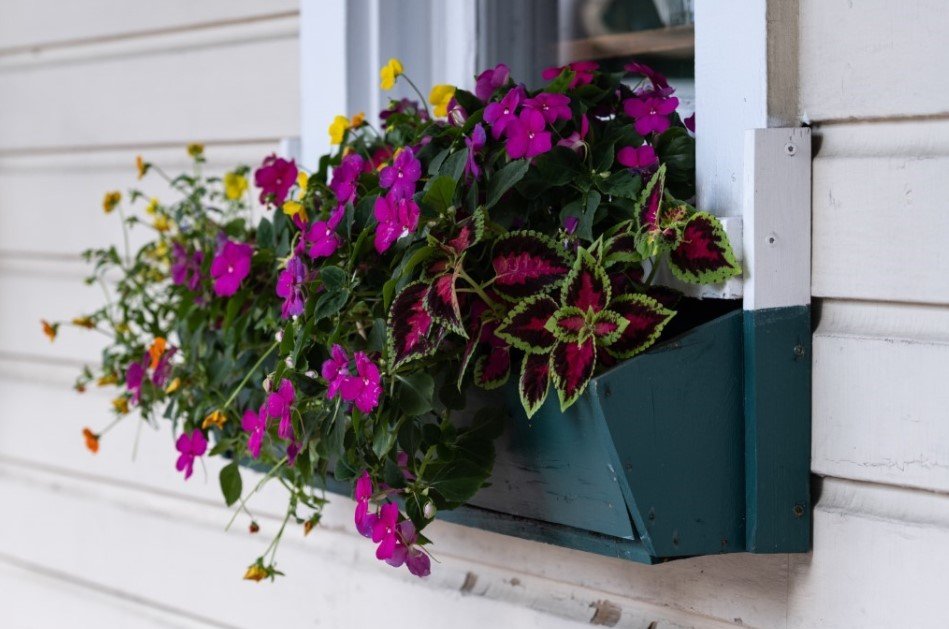Garden
4 Pros and Cons of Using Window Box Liners

Window boxes and fence flower baskets look charming on properties with or without large gardens. They can hold a bunch of colorful blooms or lush greenery, giving life to homes and other buildings.
To keep plants in good shape, many gardeners and homeowners use window box liners. The liners sit inside the main box, holding the soil and all its nutrients.
However, window box liners aren’t for everyone. Like any gardening tool, there are pros and cons to using liners. If you’re considering them for your window planters, it’s best to know more about the good and the bad.
Pros of Using Window Box Liners
Liners for planter baskets and boxes have several advantages. These pros are the most notable ones:
1. Prolongs the Life of the Window Box
While many modern window boxes are durable, some models aren’t immune to moisture damage. Moisture is the common enemy of plant containers, whether wood or metal. But plants need water to thrive.
Plant liners act as a barrier between the moisture in the soil and the flower box material. Many options are also frost resistant, so your winter plants and the box can still survive despite colder weather.
If you want to protect your planters, you must use heavy-duty window box liners. Quality liners, typically made of thick cellular PVC or aluminum, help extend the boxes’ lifespan. They won’t crack, warp, or sag. Some gardeners even choose architectural-grade liners or painted PVC options for better protection against moisture and wear.
2. Easier Maintenance and Cleaning
Using window planters as is can be tough, especially when it’s time for cleaning. Instead of scooping out soil every time, lift your plant liners out, shake them clean, and insert the replacement liners.
Window box liners help control mold or algae buildup and fertilizer residue collecting in the box corners. Using plastic liners, which are typically lightweight, also eases the process of refreshing your plants.
Plastic resin liners benefit window plant boxes, especially railing planters placed in second-floor windows. It’ll be much easier to replace or prune your plants when you’re not worried about falling over the edge.
Custom window box liners also make cleanup even easier. They’re designed to fit snugly, leaving fewer spots for soil or water to collect.
3. Improves Plant Health
If the plants in your window planters keep dying on you, there might be some issues with the drainage. Plants can drown when there’s too much water in the soil and their roots are submerged for too long.
Flower box liners can help with that problem since many models already have built-in drainage holes. Others are customizable so that you can add the drill-out holes yourself.
Some options, such as fabric planter liners, encourage healthy moisture levels. These liners, often made of natural coco fiber, help aerate the soil, allowing proper air circulation around roots, which aids plant growth.
4. Cost-Effective
Buying liners for your window or wall planters might feel like an additional expense. However, they’re worth the money.
When your window box lasts longer, you save money since you don’t need to replace it every planting season. You also reduce the cost of repairs or materials to fix damage caused by water.
Cons of Using Window Box Liners
Plant liners have pros, but they’re not always perfect. If you’re considering getting some for your railing planters or hanging baskets, you must also understand the cons.
1. Additional Cost
While they can save money over time, liners have an upfront cost. The price can add up if you have several window boxes. High quality models, like architectural grade liners, may also be more expensive than others.
That’s why some people just plant directly in the box. If you’re gardening on a budget, window box liners might be too pricey for you.
2. Limited Aesthetics
Many homeowners care about garden decoration and appearance, and visible plastic window box liners could ruin the aesthetic. Liners can limit your design choices, especially if you like side planting or prefer using hanging baskets. You can trim or hide them, but it’s an extra step to make sure they don’t stick out.
3. Might Fit Poorly

Finding the perfect liner isn’t always easy. Window planters come in various shapes and sizes, and liners don’t always match up perfectly.
A liner that’s too small can leave gaps where water or soil collects, while one that’s too large might not sit properly. This problem could cause uneven watering or wasted space.
4. Extra Step in Setup
Using a liner means one more thing to handle during planting. You must position it correctly, cut drainage holes if they’re not already there, and sometimes adjust it as you fill it with soil.
It’s not a big deal, but some people find the extra step unnecessary. Those who enjoy more straightforward planting techniques and processes might not like using liners.
Conclusion
Window box liners can be a fantastic addition to your gardening routine, but aren’t essential for everyone. They help your planters last longer, stay clean, and promote healthier plants. However, they cost extra, can be tricky to fit, and sometimes ruin the overall look.
Consider your gardening style, budget, and how much time you want to spend on maintenance. The right choice will keep your plants healthy and your window boxes looking their best.
-

 Tech2 months ago
Tech2 months agoSora 2 Invite Code: How to Get One (Step-by-Step Guide)
-

 Social Media2 months ago
Social Media2 months agoWhat the “67” TikTok Meme Really Means
-

 Business2 months ago
Business2 months agoDubai Freezone Company Formation: From Name Reservation to Bank Account
-

 Tech2 months ago
Tech2 months agoWhat To Do When Your Business Faces Network Vulnerabilities






